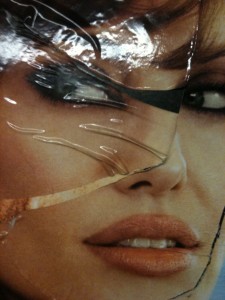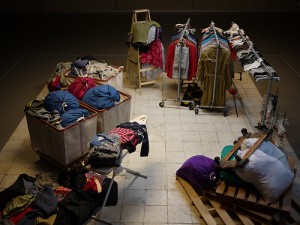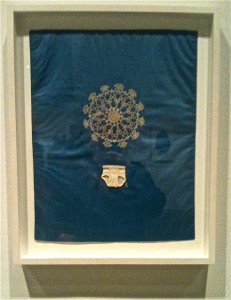The museums of this City have a lot to live up to: they are the Brangelinas and Britneys of the art universe, and, when the minutiae of one’s daily existence is subject to an almost tabloid-esque fetishism, well–let’s just say it is hard to relax. That said, one still has choices: about how to live, who to love, etc…. and sometimes it is hard not to feel that certain institutions have a more Disney-inflected, if not downright cynical, notion of how to navigate their mission and the spotlight.
Here, in three installments, a few recent excursions (in search of shelter from the elements, as much as anything else) that left this correspondent with differing degrees of warmth…First, the good news….
The Whitney, despite its forbidding modernist exterior, still manages to feel like a hometown hangout. Is it that the bookstore is, well, a real bookstore? A place where theory junkies linger, hunger and discover, and the stock feels deliberate and curated, as if someone in charge has actually read and loves the books? Or is it the kind of cozy unpretentious slouchiness of the lobby, where the carefully trained eye can often spot aging art divas lounging and taking a load off before braving the galleries or the cold? There is also something about the scale, a big-enoughness, that at this point is an anomaly for institutions of this importance.
The question of scale is a big one (sorry)–opening the door as it does to all kinds of inquiries about intimacy, insistence, volume….and as it happens, is one of the keys to the exhibition on the 3rd floor, Charles LeDray: workworkwork.
Mr LeDray is a craftsman par excellence, with an attention to detail that borders on —well, symptoms. He has recreated images of the world as deftly, as persistently as a camera, but in a vocabulary of exquisitely made objects of a maddening, cloying, astonishing tininess. There is the long line of (tiny) hats, a hymn to Maleness entitled Village People; a (tiny tiny) line of clustered blankets, coats and objects that was unmistakeably the homeless/crackhead bazaars of 2nd Avenue in the 80’s, complete with teeny tiny little vintage life magazines. There are what can only be described as meticulously carved portraits of objects, including a breathtaking strand of wheat, carved out of “human bone”, and unnervingly accurate cultural biopsies in the form of “portraits” of used clothing stores, including what I would swear is the long bygone Domsey’s Warehouse.
Like all true obsessives, Mr LeDray does occasionally carry on too long, and the curator allows this, possibly because of an anxious need to fill the large long galleries (perhaps more empty space might have been productive?). By the end one feels a claustrophobic discomfort, as if a sorority prank at the Bates Motel has suddenly turned creepshow.
Mr LeDray is at his best when going farther into the questions raised by single objects/installations. The devastatingly beautiful wheat, for example, or installations that take the perfect, perfectly made clothes apart again (oh! the horror to rupture work so painfully, lovingly assembled!) feel expert and eloquent, and banish specters of doll clothing and flea circuses. The constant repetition has a numbing effect—but not enough so as to outweigh the joys of exploring Mr LeDray’s relentless and masterfully rendered universe.



